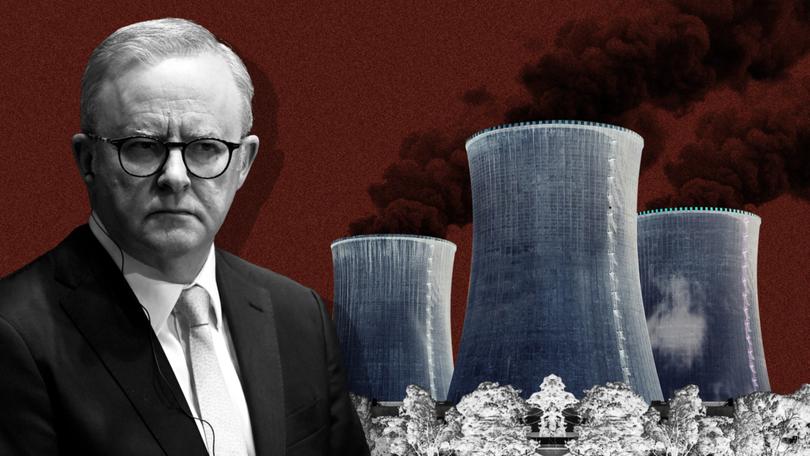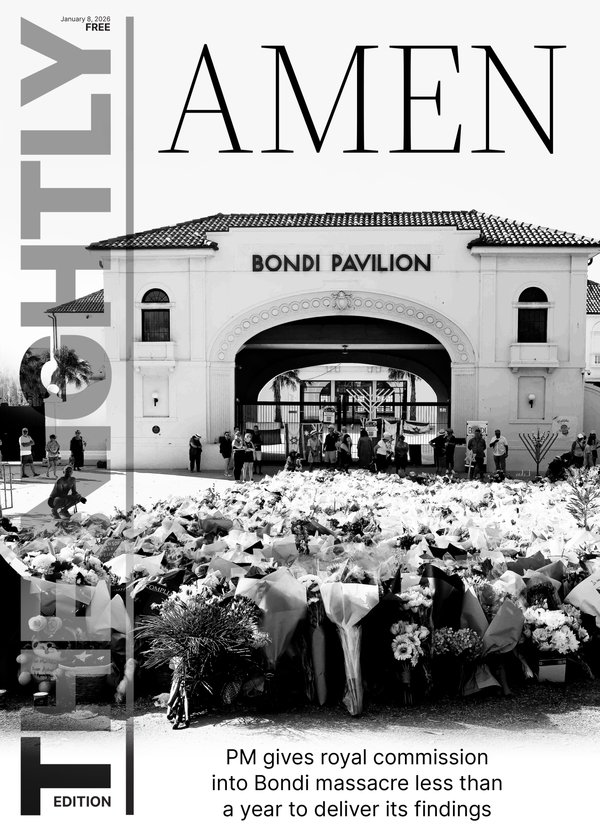PAUL MURRAY: Anthony Albanese’s nuclear attack backfires as he fluffs his lines on renewables costings

The first week of Australia’s renewed nuclear debate was a messy affair, generating more heat than light. And heaps of waste.
Very few of the nuclear critics come to the party with clean hands. Many have undisclosed commercial irons in the fire.
And several made fools of themselves with over-inflated claims about the cost, timelines and modern capability of nuclear generation, assertions which don’t stand scrutiny.
Sign up to The Nightly's newsletters.
Get the first look at the digital newspaper, curated daily stories and breaking headlines delivered to your inbox.
By continuing you agree to our Terms and Privacy Policy.But the biggest loser was Prime Minister Anthony Albanese who tried to dismantle Opposition Leader Peter Dutton’s election-defining policy, planning to use the parliament this week to attack the plan on the basis of cost.
Albanese’s oft-repeated simple-minded mantra that “renewables are cheaper” is irrelevant if they don’t provide enough reliable energy to keep the lights on 24/7. And they can’t.
Dutton quickly turned the tables and asked the Prime Minister for a costing on his government’s renewables transition plan – Labor policy for many years – which Albanese was unable to answer.
It’s hard to argue that the Coalition’s policy is more expensive when he can’t say what his massively subsidised plan will cost.
To inform a sensible debate on our energy future, it is a fundamentally important statistic that we have a right to know. In a properly functioning parliament with an open and accountable government, it would be provided as a matter of course.
At least Dutton says he intends to provide costings for his seven-plant proposal. Albanese shows us the finger.
“Prime Minister, what is the total cost of the government’s energy plan, and what will the Capacity Investment Scheme cost taxpayers,” was Dutton’s first question-time foray on Monday. The CIS is Labor’s plan to have taxpayers underwrite private investment in renewables to meet the 2030 target.
Albanese blustered for a full five minutes, including several attempts by Dutton to get Speaker Milton Dick to make the PM address the question, but he couldn’t provide a figure.
So Opposition energy spokesman Ted O’Brien weighed in: “The Princeton University’s Net Zero Australia report has modelled the capital cost of the energy transition, according to a similar pathway to the government’s current plan, for the cost of between $1.3 trillion and $1.5 trillion. Prime Minister, what is the total system cost of the government’s plan?”
Four more minutes of buffoonery from Albanese provided no attempt at an answer. Further attempts during question time over the course of the week failed to elicit the figure all Australians need to know.
Let’s have a go at filling in some of what the PM was so reluctant to reveal – assuming he even knows the real amount.
One of the highest costs in Labor’s plan is the so-called “rewiring the nation” which is needed to connect far-flung wind and solar facilities with major power markets.
The government says the cost is $20 billion. The basis of Dutton’s plan in siting nuclear plants where coal-fired stations existed is to avoid much of that bill and the disfiguring power lines that go with it.
But the head of the government’s Clean Energy Finance Corporation, Ian Learmonth, told a Rewiring the Nation conference in May last year that the $19 billion Budget allocation to the project so far was “only a fraction of the capital required.”
“We will of course be aiming to leverage our innovative capital alongside the private sector in order to deliver on this initiative,” Learmonth said.
Since those remarks we have seen that the private sector is not rushing to invest. Taxpayers will have to fill the void.
And Learmonth also disclosed more of the real costs: “We estimate that some $120 billion of capital expenditure is needed to finance new solar, wind, transmission, storage and ancillary services to 2030 in order to meet our ambitious national renewable energy and emissions goals.
“We need to install an estimated 29 GW of large-scale renewable generation – that’s about 3.6 GW a year or 300 MW per month (a decent-sized wind farm a month) – in order to reach 82 per cent renewables by 2030.
“To give you an understanding of the uplift required to get there, last year we installed just 2.3 GW of large-scale renewable energy capacity.”
This week, the national market operator, AEMO, updated the required figure to 6GW a year – putting the target way out of reach.
However, Albanese was not alone in seeking to shoot down the coalition policy with hyperbole. Others with hidden agendas were not far behind.
Smart Energy Council chief executive John Grimes claimed the coalition policy would cost between $116b and $600b to provide “at best” 3.7 per cent of the energy to be delivered by the government’s current strategy.
A credible commentator might think that the margin of error between those two hyperbolic figures would make his estimate meaningless. Which it was.
As I showed in the column last week, the Koreans can build 1300MW reactors for overseas clients for around $9 billion each in eight years.
What is the Smart Energy Council anyway? Nothing more than a front for the renewables industry, many of them businesses selling Chinese-made rooftop solar panels.
And while nuclear effectively competes with renewables’ market share, and might possibly hinder some investment in marginal projects, the coalition plan is for reactors to underpin the shortfalls of renewable projects, not replace them.
Instead of debating competing facts to defend its unreachable 2030 target, the government pressed on with a series of juvenile scare stunts that backfired even in left-leaning parts of the media.
Those three-headed fish were stinking after a day.
Albanese should have heeded the advice of former Labor Minister and Leader of the government in the Senate, Stephen Conroy. “Labor needs to be very careful,” Conroy said, acknowledging a Lowy Institute poll showing 60 per cent of Australians support nuclear energy.
“It can’t just … take the view that might’ve been prevalent 20 years ago, which was nuclear disasters around the world are well remembered and there are great risks with living near them.”

The wackiest contribution to the debate came from former Labor PM Paul Keating who called the coalition policy “a resort to the most dangerous and expensive energy source on the face of the earth”.
Keating, who these days usually ventures into the media only to defend China against the mildest slight, even from his own side of politics, seems blind to Beijing’s nuclear embrace.
China has 55 nuclear reactors in service – second only to America in output – with 25 under construction at the end of October 2023, another 41 officially in planning and 158 contained in future proposals, according to the World Nuclear Association.
America still has the most operable reactors, 94, down slightly from its peak, something that drew questionable anti-nuclear commentary from Andrew Miller in his column on Monday. This from the WNA provides some context:
“One of the reasons for the hiatus in new build in the USA to date has been the extremely successful evolution in maintenance strategies. Over the last 15 years, improved operational performance has increased utilisation of US nuclear power plants, with the increased output equivalent to 19 new 1000 MWe reactors being built.
“The number of operable reactors has reduced in recent years, from a peak of 104 in 2012. Early closures have been brought on by a combination of factors including cheap natural gas, market liberalisation, over-subsidy of renewable sources, and political campaigning.”
That’s a nice way of saying the anti-nuclear forces in the US are ideological, not scientific, and driven by blinkered Labor-like local Democrat administrations, not national economics.
Just this week, US Congress voted overwhelmingly to reboot America’s nuclear industry with the Advance Act, specifically to counter climate change, leaving Miller out on a limb.
Also interesting in Labor commentary against nuclear was the contribution of former Collie MP, Mick Murray, purportedly speaking for the town.
“There’s been no studies done about the impact,” Murray said. “Where are they going to get the water from for the cooling, which is a huge problem even with the current power stations.”
Undisclosed in media reports of Murray’s view is that he heads up a stalled commercial pumped hydro proposal for Collie, which would need access to flooded coal pits as a water source, along with the generator sites for transmission infrastructure.
So enough water for hydro, but not for nuclear, Mick?
And then there was Madeline King, Labor’s Rockingham-based MP for Brand and Federal Resources Minister, responsible for approving exports from our massive uranium deposits to reactors overseas, including to China.
The otherwise admirable King is retreating to Orwellian newspeak to cover the blatant inconsistency between Labor’s support for AUKUS nuclear-powered submarines home-ported at HMAS Stirling and its opposition to nuclear power in general.
She bluntly says there is no comparison. In Labor’s “four legs good, two legs bad” Animal Farm, it seems not all nuclear reactors are created equal.
If they were, she would have to admit her hypocrisy.
At least she avoided three-eyed fish.
